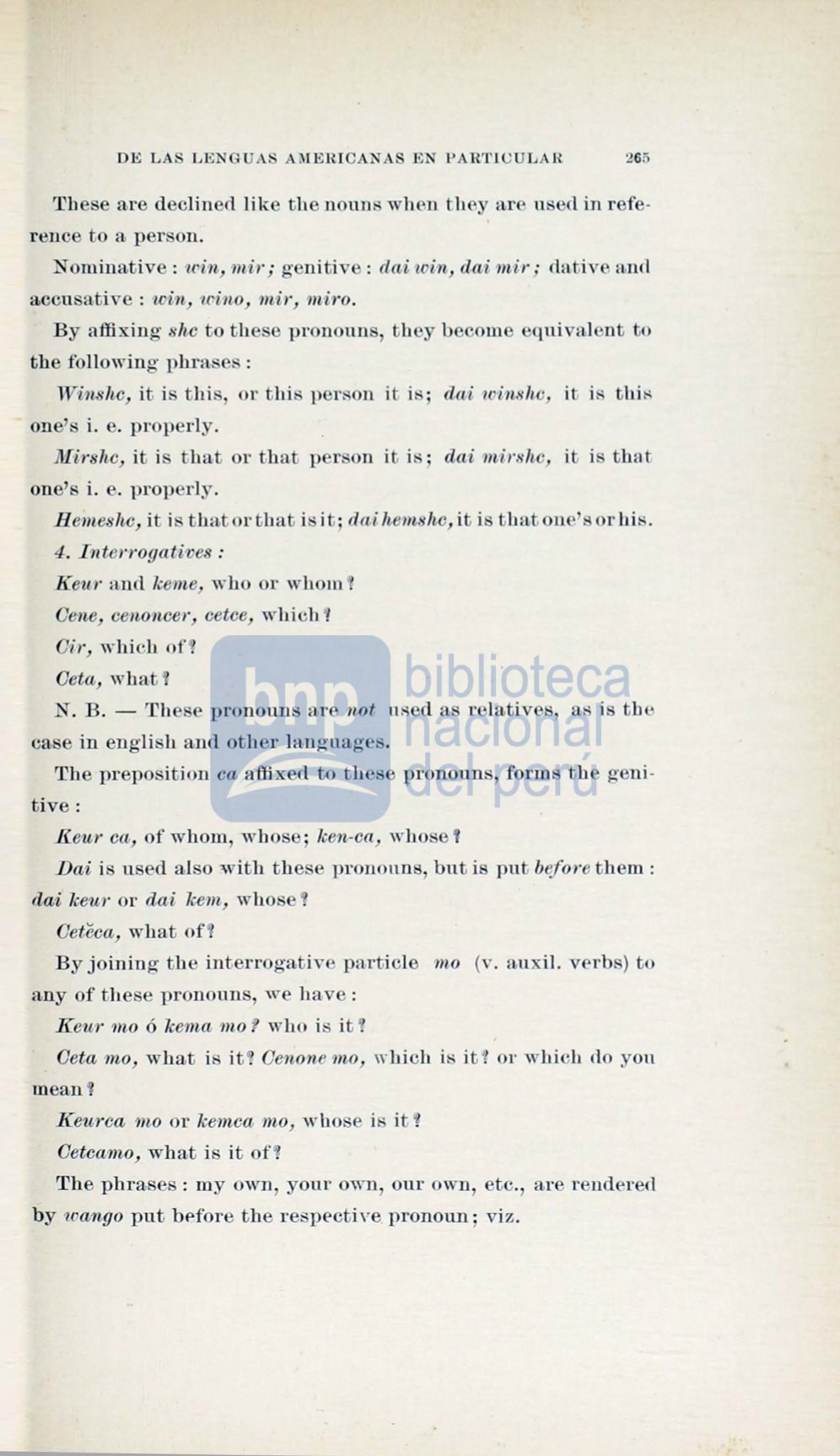

DE LAS LE GUA AMERICANA EN PARTICULAR
265
Tbese are declinen like the nouns when they are usecl in refe–
rence to a person.
Nominative:
u in, mir;
genitive :
dciiwin, dai mü·;
cla.tive ami
accusative :
w-i1i, wino, mir, miro.
By affixing
shc
to the e pronoun
tbey become equivaJent to
the following phra es :
Win,shc,
it i
thi , or this per on it i ;
dai winshc,
it i
thi.–
one'
i. e. properly.
Mirshc,
it i
tbat or that per on it is;
dai mirshc,
it i
that
one's i. e. properly.
Heineshc,
it i thatort!Jat i · it;
d(J¡ihem•hc,
it is tlrn.tone'sor !Ji
4.
Interrogat-ives :
Keiir
ancl
keme,
who or whom
"1
Gene, cenoncer, cetce,
which
'I
Oir,
which on
Oeta,
what~
N. B. -
The e pronouns
a.renot
nsecl
a
r latives a ' i
tb e
case in engli h ancl other lano·uages.
The prepo ition
ca
affixecl to tbe e pronouns, forros the geui –
tive:
.Keur ca,
ofwhom, whose;
leen-ca,
whose'
JJcii
i u ecl also with tbese prononns, but is put
befare
them:
llai lceur
or
dai lcem,
whose
'I
Oeteca,
wbat of
By joining tbe interrogative particle
mo
(v. auxil. verbs) to
any of these pronouns, we have :
K eu1·
11w
ó
lcemci
mo?
wbo
i
it?
Oeta mo,
wbat is it'I
Oenone mo,
which is it"I or wbich do yon
mean '!
Keurca mo
or
lcemca mo,
whose is it
'I
Oetcamo,
what is it on
The phrases : my own, youi· own, our own, etc., are renderecl
by
10wngo
put bPfore the respective pronoun; viz.
















